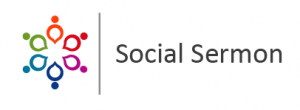by Diana Norma Szokolyai, Associate Consultant, Knowledge Communities
[cross-posted from the Knowledge Communities blog]
A couple of weeks ago, I had the pleasure of attending a webinar hosted by Darim Online on the strategic use of Facebook (FB) for non-profits. We were invited by Caren Levine, who is a part of our Kehilliyot Community of Practice. Darim Online specializes in internet strategies for Jewish organizations and their communities, and the webinar was part of the organizations Social Media Boot Camp. The host, technology maven Avi Kaplan (on twitter @meshugavi), provided valuable insights into using FBs tools. Besides laying out the great strategic use of FB groups, analytics, pages, and friend lists, Avi also talked about using FB for causes, something he knows a lot about from his deep work with the 3-year old nonprofit, Epic Change.
Intrigued by Epic Changes mission to amplify the voices and impact of grassroots change-makers and social entrepreneurs, we set up a web meeting with him the following week via WebEx . What we discovered was the organizations innovative use of technology and social media to create and spread change through the powerful combination of social media tools and age-old storytelling.
Epic Change has been focusing on a project in Arusha, Tanzaniathe support of the Shepherds Junior School. Co-founders of Epic Change, Sanjay Patel and Stacey Monk, an IT project manager and a management consultant respectively, created the nonprofit organization after a life-changing trip volunteering in Africa in 2007. The project supports the work of the schools founder, Mama Lucy Kamptoni, who they describe as a savvy and passionate local woman. Epic Change made initial loans to the school and then helped them find creative ways to pay back the loan, such as a school performance and selling hand-made crafts.
In addition, the organization has facilitated finding partners to raise money for the school, such as the May 2009 $10,000 grant from Ideablob, which funded the schools first technology lab. In October 2009, the fifth graders became the first #TwitterKids of Tanzania when they partnered with LacProject, part of a social media curriculum. The story of one of the local students whose life has been impacted can be found here. One particularly successful partnership was with Silicon Valley Tweet Up, where they raised over $2,000. You can read more about their success in getting this communitys story out there through blogging themselves, forming partnerships, and empowering the locals with the technology to give voice to their own perspective (and tweet their thanks) by visiting Epic Change’s news page.
We at Knowledge Communities were honored to talk with Epic Change and learn about their extraordinary work. This organization is a leading example in building community around an important cause and using the tools of storytelling and social media to raise funds to support grassroots change-makers that are in need of resources in order to continue their work. We are also thankful to our Kehilliyot Community of Practice and the sharing and generosity that members show towards one another, thereby allowing us all to gain more insight into good work and how it is getting done around the globe.

 Social media, like other major communication revolutions before it (think: printing press) have radically changed the way we learn, connect and organize. The impact on culture and behavior is significant – we have new ways to connect with our communities, find meaning, express ourselves and engage. The new ease of organizing is fundamentally changing the role that organizations play for their constituents. This is great news for the Jewish community, if we are able to take advantage of it.
Social media, like other major communication revolutions before it (think: printing press) have radically changed the way we learn, connect and organize. The impact on culture and behavior is significant – we have new ways to connect with our communities, find meaning, express ourselves and engage. The new ease of organizing is fundamentally changing the role that organizations play for their constituents. This is great news for the Jewish community, if we are able to take advantage of it.

